The Regia Aeronautica Italiana (Royal Italian Air Force) was established as a separate arm of the Italian military by Mussolini shortly after he became the Italian Prime Minister, and he spared no time in making it a huge propaganda tool for his regime. Italian planes, emblazoned with the colours of the Italian flag, claimed numerous aviation records for the proud RSI (Repubblica Sociale Italia, Italian Social Republic) between 1 April and 1 November 1939.
Prior to World War Two, the Regia Aeronautica joined the German Luftwaffe in fighting alongside the Spanish Nationalists in the Spanish Civil War, sending in excess of 6,000 personnel and 1,000 planes to the warzone. The Italian planes proved far superior to the Soviet and Spanish-built planes opposing them, gaining clear dominance of the skies. However, this led to an overconfidence in Italian biplane airpower that would be tested in the opening stages of WW2.
The Regia Aeronautica Through World War Two
The Battle of France: As the Battle for France drew to an end, Mussolini declared war on France and the United Kingdom, aligning Italy with the Axis powers. In the skies, Italian Fiat CR.42 Falco biplanes clashed with French Dewoitine D.520 and Bloch MB.150 monoplanes and, despite having a clear speed disadvantage, still acquitted themselves admirably.
The Battle of Britain: Remarkably, an independent Italian air corps supported the Luftwaffe during the Battle of Britain. Though the British weather over England and the Channel rendered most missions ineffectual, CR.42s saw combat against British Hawker Hurricanes and Supermarine Spitfires on just two occasions and, despite Italian claims to the contrary, were outclassed on both occasions. Though the courage of the Italian pilots may have earnt the respect of RAF pilots in those engagements, it was clear now to the Regia Aeronautica that their biplanes had become obsolete compared to more modern designs.
Western Desert: Early biplane encounters between CR.34s and CR.42s and Royal Air Force Gloster Gladiators had the equal measure of the other. However, the new Macchi C.202 Folgore (Thunderbolt) monoplane proved superior on all counts, even outperforming the German Messerschmitt Bf 109s, achieving an impressive kill/loss ratio of 4.4/1! Despite this, the RAF’s successes over Rommel’s retreating armies inflicted considerable losses.
Mediterranean: Italian bombers struck out from their ‘unsinkable aircraft carrier’ bases on the Italian peninsular. Striking at Gibraltar, Malta, and as far as Greece and Yugoslavia. Despite initial successes, the Regia Aeronautica became increasingly subordinate to the directions of the German command, especially during the Allied invasions of Sicily and Italy.
Eastern Front: Italy’s contribution to the German war effort in Russia was considerable, with the 8th Italian army consisting of 235,000 troops. The Regia Aeronautica accompanied them in force too, initially with Macchi C.200s and Caproni Ca.311 bombers before being reinforced with newer Macchi C.202s. Initially based in the Ukraine they fought the Soviets in the skies about Stalingrad.
The Regia Aeronautica in Blood Red Skies
Macchi C.200 Saetta (Lightning)
The Macchi C.200 Saetta (Lightning) was the Regia Aeronautica’s hardest-working front-line fighter. The Saetta represented a considerable step forward for the Italian air force. Production problems and conflicting demands on manufacturers limited overall production of the C.200 to a total of 1,151 aircraft built.
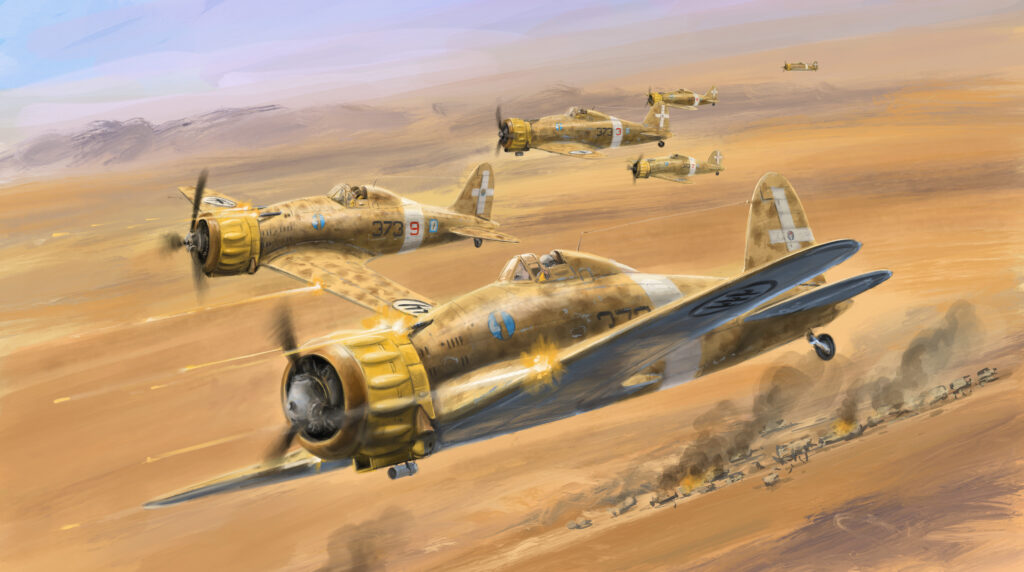
This aircraft is of fairly average speed and manoeuvrability. However, the Tight Turn trait, coupled with a bonus turn from Aggressive Tactics, can swing a Saetta to bear down on a target that may have thought itself safe. Patient positioning is needed to pull off such an ambush tactic, though wily enemy pilots may still see it coming.
Ace Pilot Leonardo Ferrulli: Ferruli’s Killer Instinct ace skill makes him particularly deadly at close range. Coupled with the manoeuvrability and the Tight Turn ability of the Saetta he can easily get into a position to unleash a hard and fast strike while his Tough ace skill might help him survive any reprisals.
Reggiane Re.2002 Ariete (Ram)
The Reggiane Re.2002 Ariete (Ram) could carry a respectable payload and saw service as a fighter-bomber during the Sicily landings. After the armistice, surviving Arietes were flown by both the Italian Co-Belligerent Air Force for the Allies and by the Germans. Reggiane couldn’t meet demand, only managing to supply 225 Ariete aircraft.
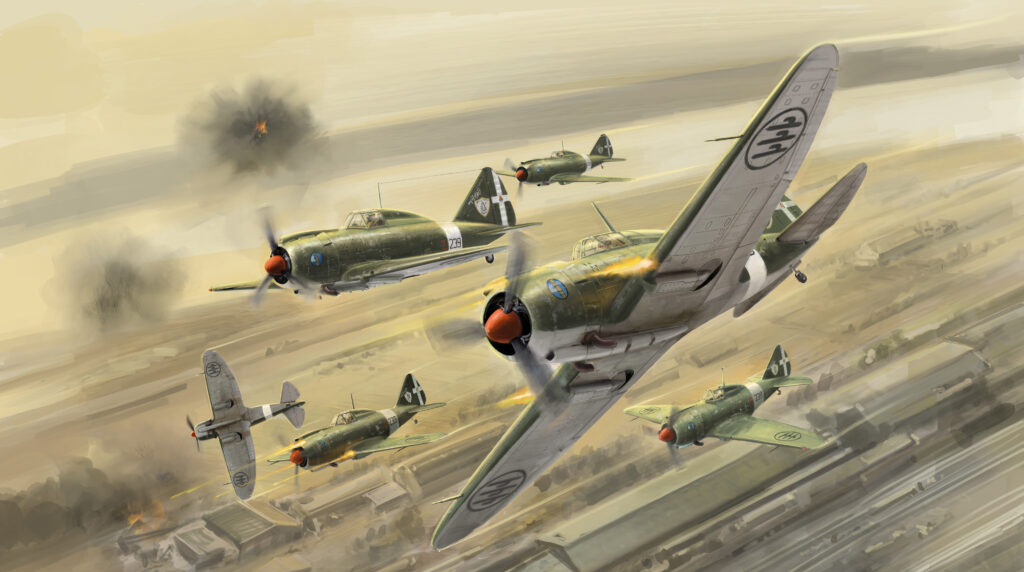
This fast, tough, and manoeuvrable aircraft can use its Rapid Roll trait to keep the enemy in its sights while its Robust trait and Low Altitude Performance doctrine can allow it to survive a tight spot, should it find itself in one. It’s a risk, but this aircraft’s superior survivability might make it worthwhile as bait for its wingman to break off and line up for a shot on an ensnared foe.
Ace Pilot Giuseppe Cenni: The combination of Giuseppe’s Mother Hen and Slippery ace skills make him best utilised as a wingman for others, being nimble enough to evade on his own if needs be. This, combined with his Ariete’s Robust trait, can make him a difficult pilot to eliminate.
Savoia-Marchetti SM.79 Sparviero (Sparrowhawk)
The SM.79 Sparviero (Sparrowhawk) had a reputation for being fast, reliable, and well-armed and formed the backbone of Italy’s medium bomber force, with 600 aircraft. It saw action as a bomber, transport, reconnaissance aircraft, and torpedo bomber. Over 1,200 Sparviero were produced, making it one of the most numerous Italian aircraft of WWII.
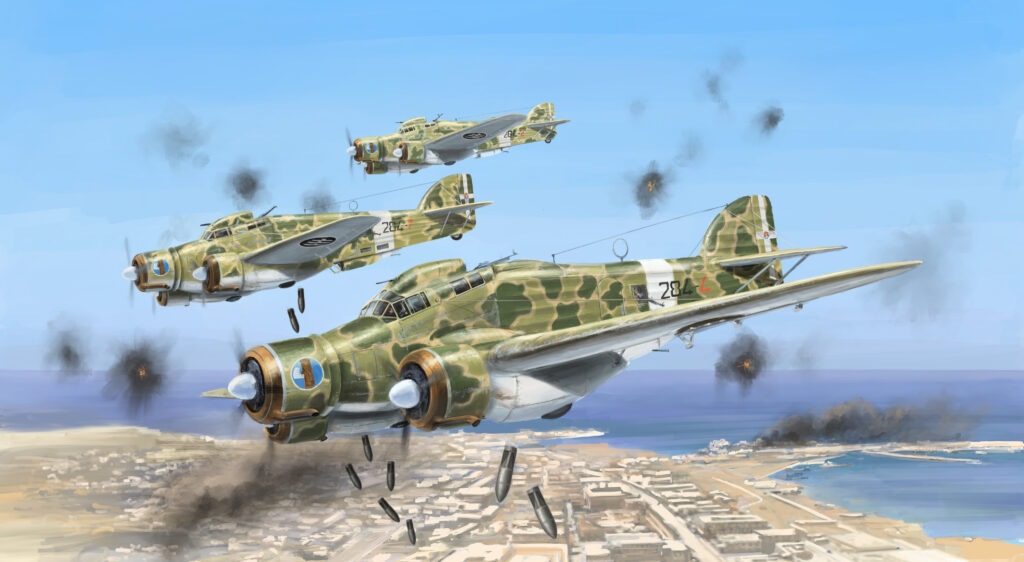
This reasonably fast multi-engined bomber benefits from the Interlocking Fire doctrine which gives it great protection to the sides and rear when flying in close formation. However, as with all bombers, they can be vulnerable without a fighter escort providing good coverage too.
Ace Pilot Carlo Emanuele Buscaglia: Carlo’s Cool Under Fire ace skill can keep him steady on his bombing run, which is good as he’ll be a prime target because of his Torpedo Expert ace skill. It’s probably best to keep him in the centre of a formation of bombers.
Regia Aeronautica Expansion Pack
This Regia Aeronautica expansion pack contains additional cards for Blood Red Skies. Datacards for the following Italian aircraft are included: Fiat Cr.42 Falco, Fiat G.50 Freccia, Reggiane Re.2001 Falco II, Macchi C.205 Veltro, Breda Ba.65 and Fiat Br.20 Cicogna. This pack also includes Action Deck cards which cover the aircraft presented plus a wide variety of other aircraft used by the Regia Aeronautica:
- 15 Trait cards
- 7 Theatre cards
- 6 Doctrine cards
- 3 New Equipment cards
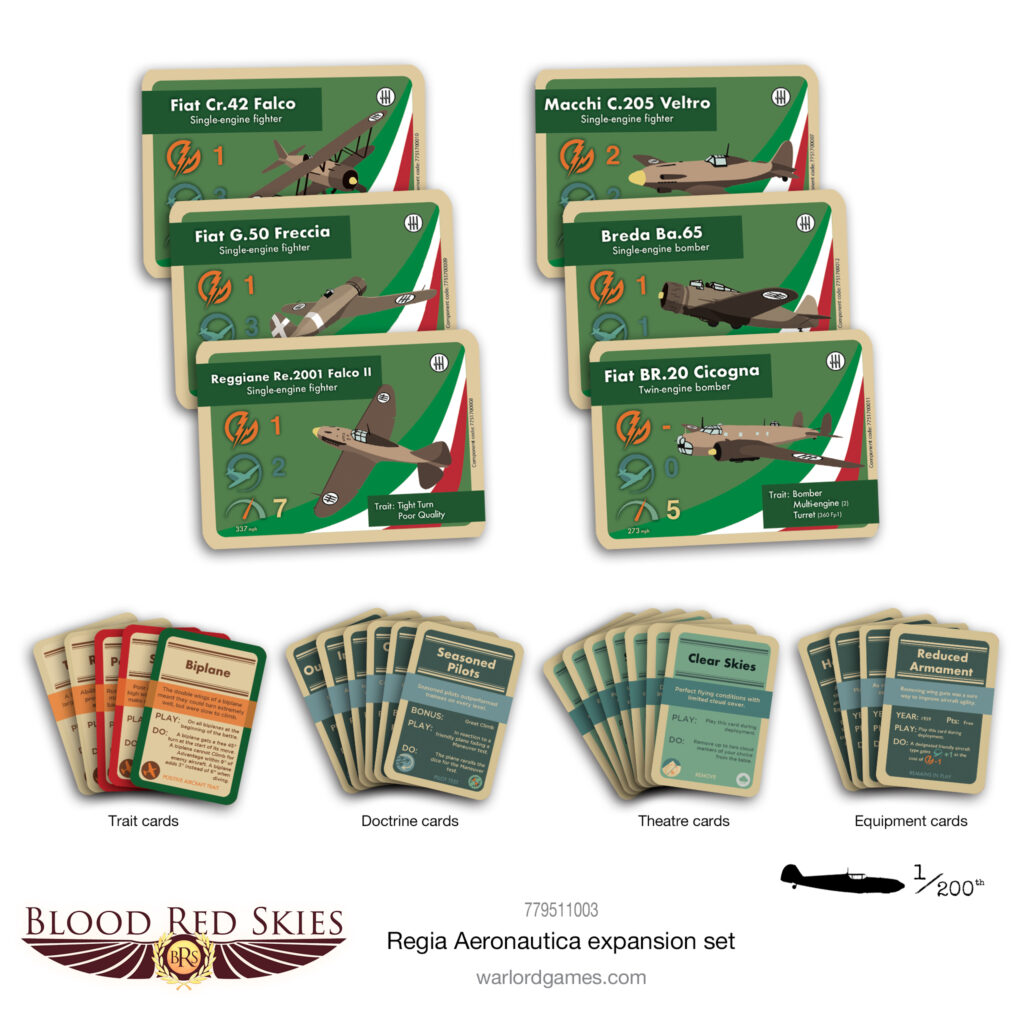
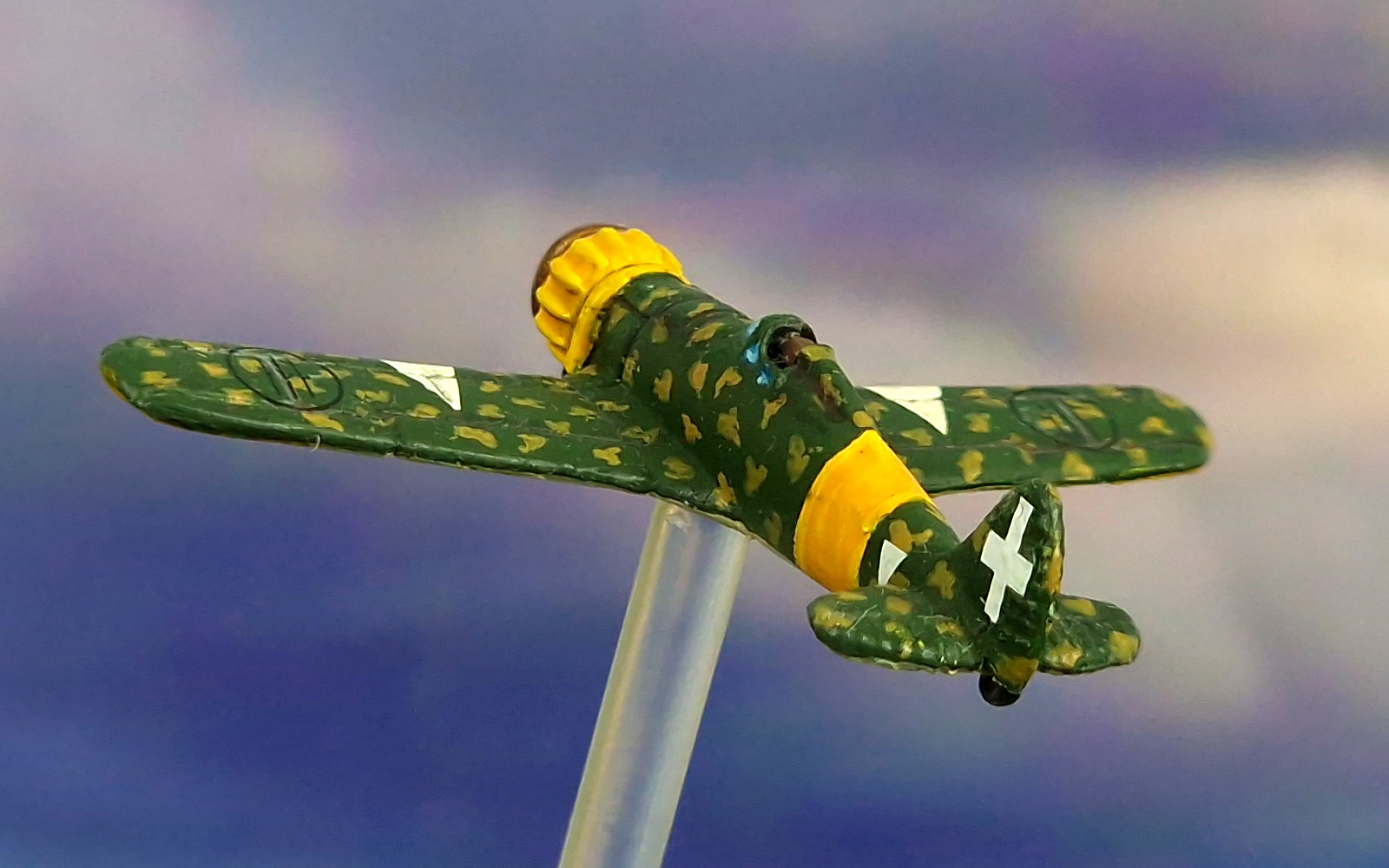
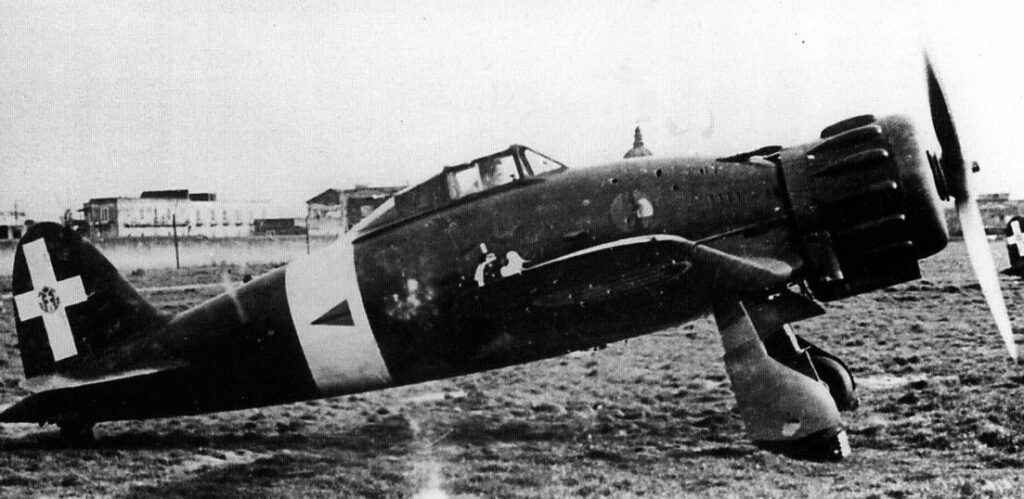
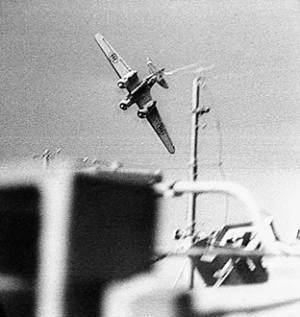
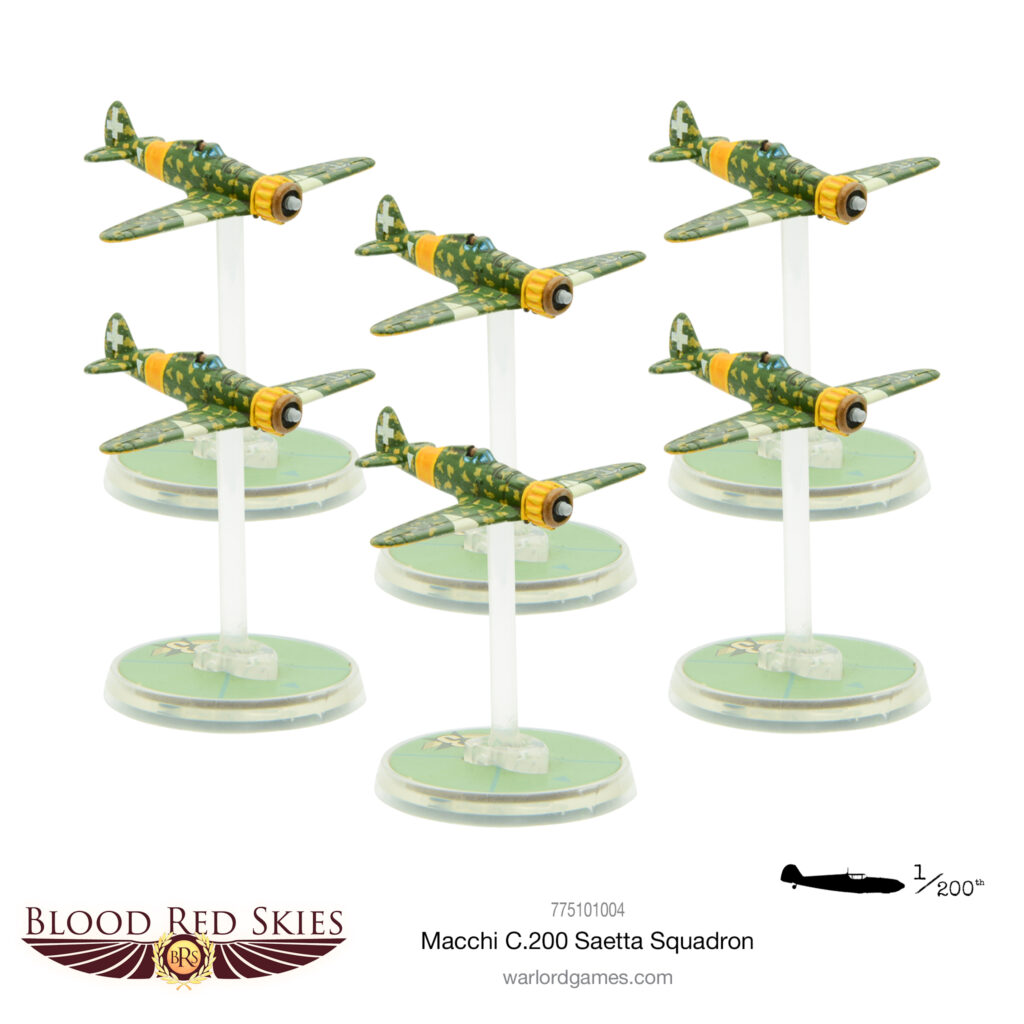
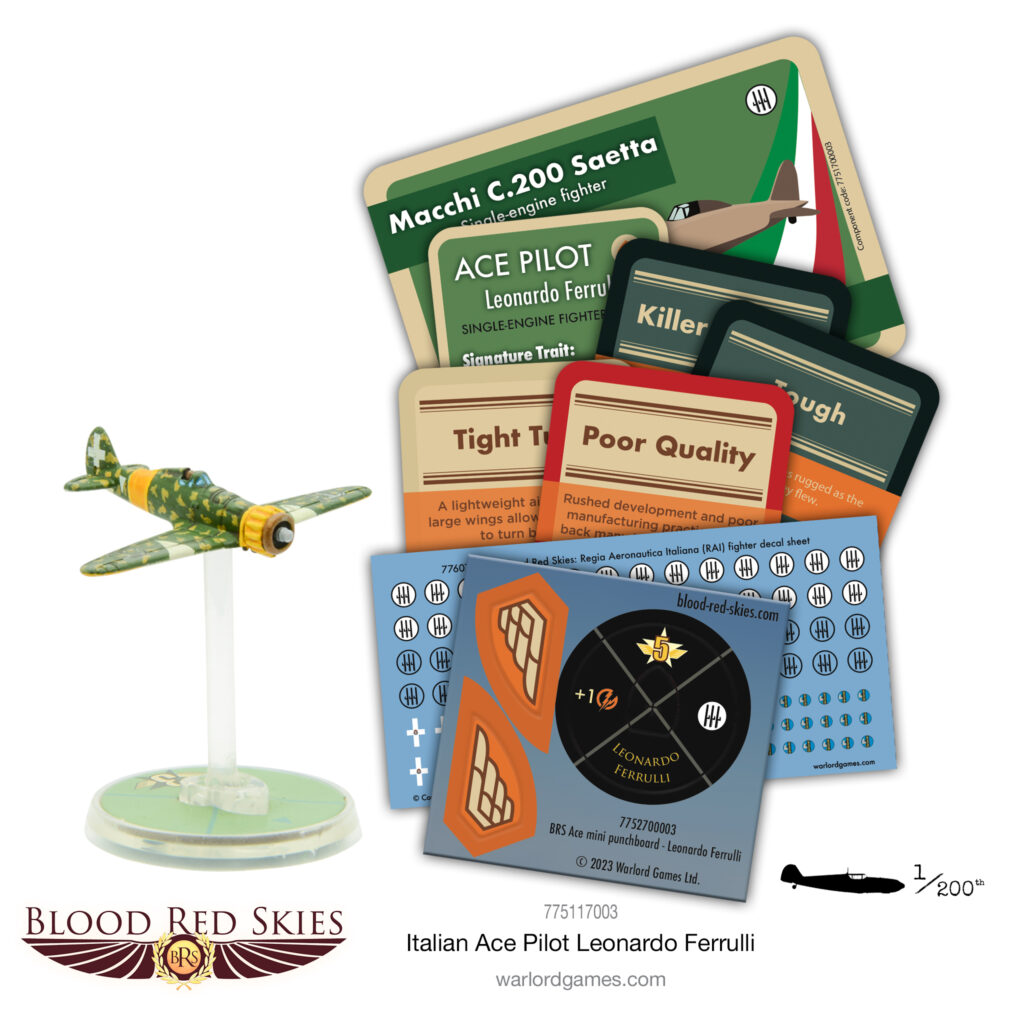
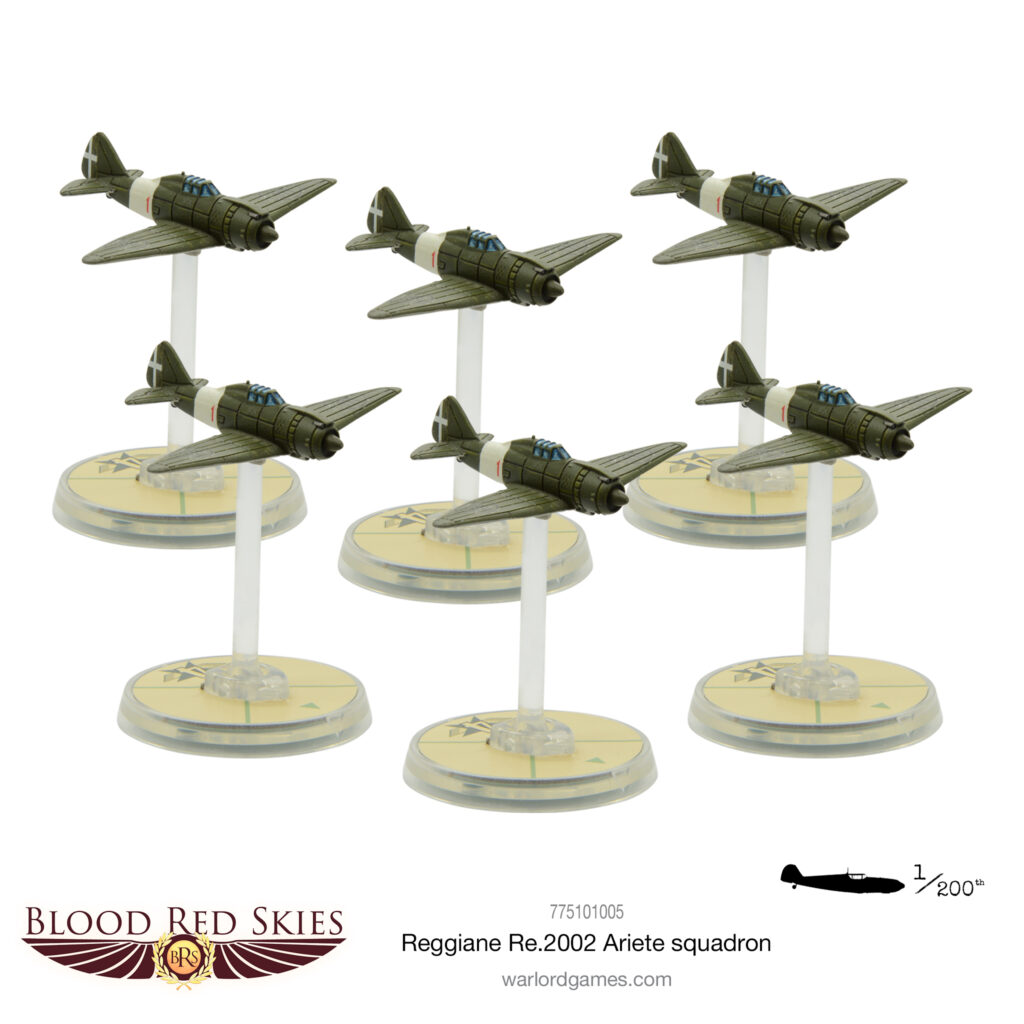
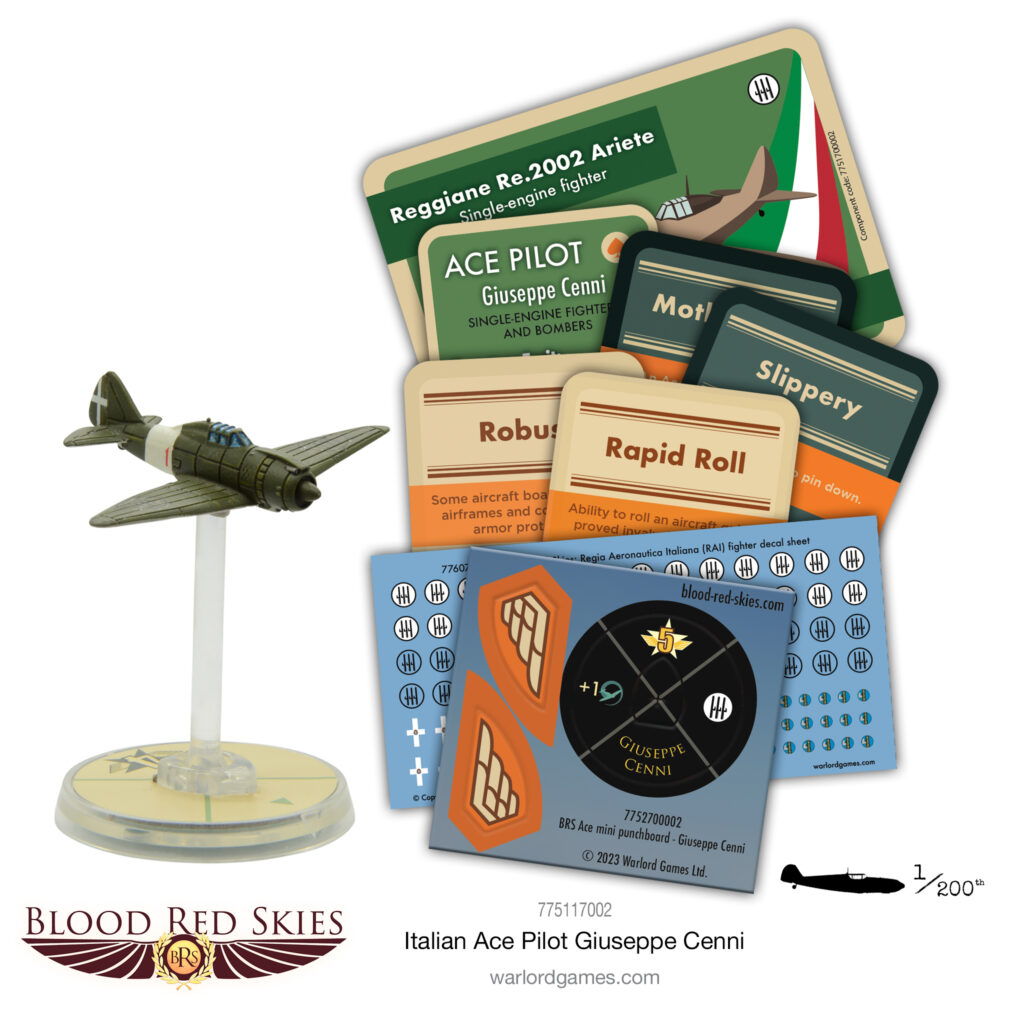
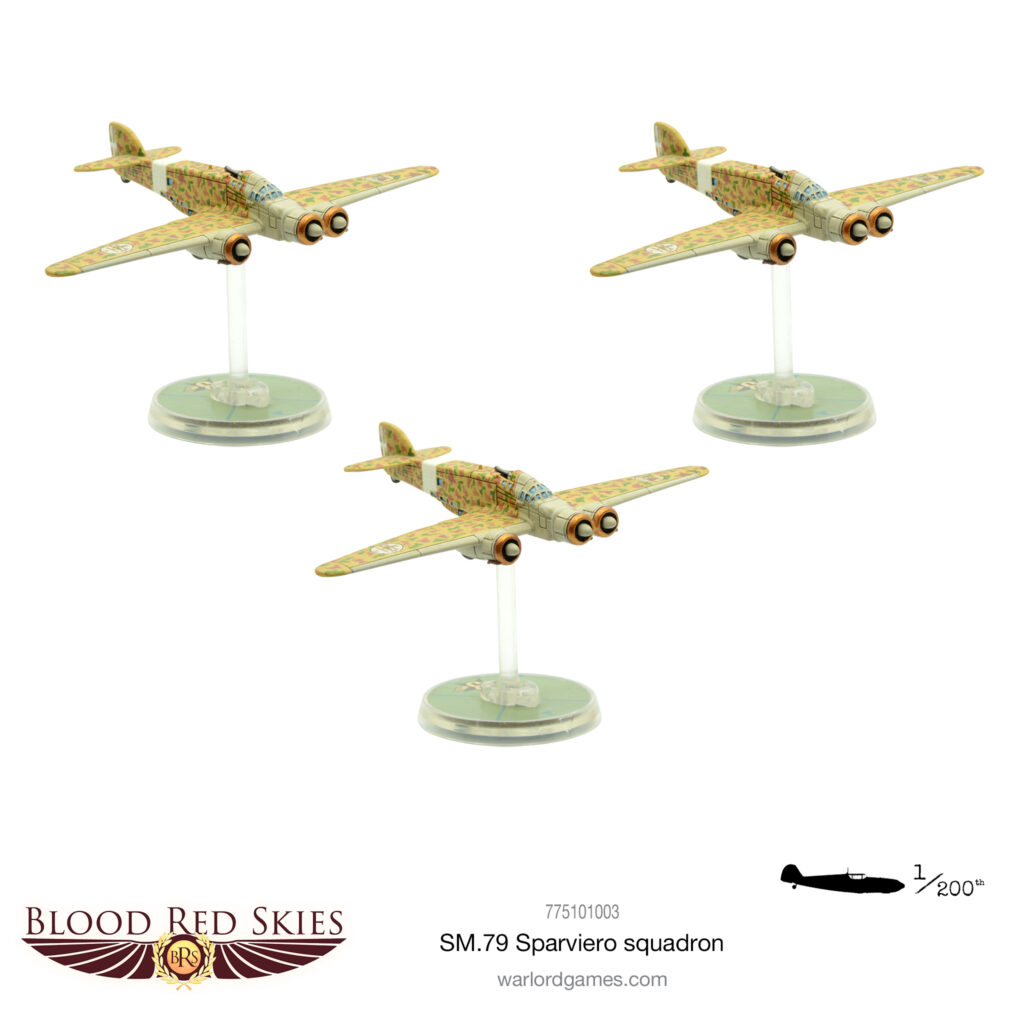
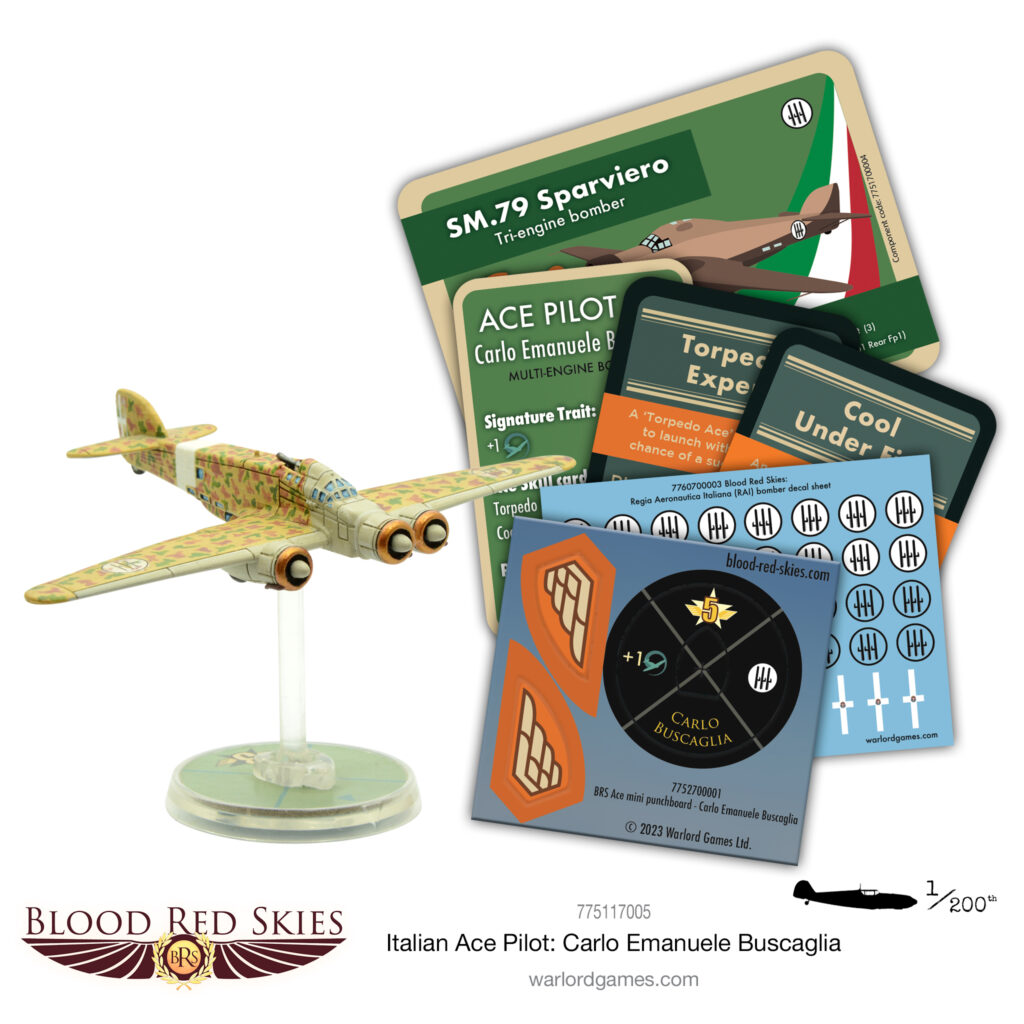
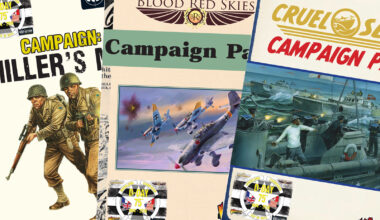
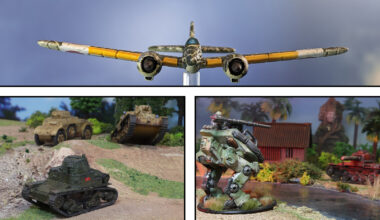
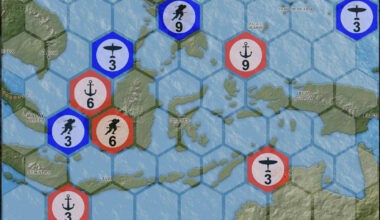
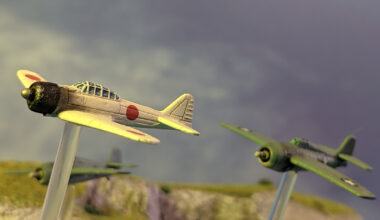
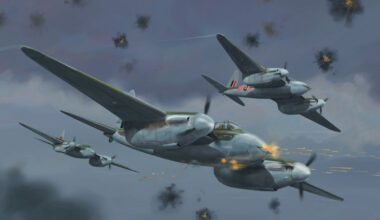
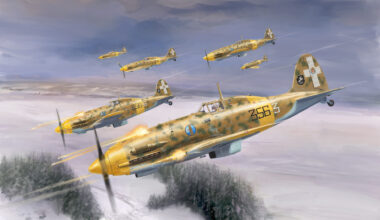
1 comment
The RSI was created in Northern Italy in 1943 as a puppet state by the Germans after releasing Mussoinin from the Gran Sasso. In 1939 there was no such a thing as the RSI…